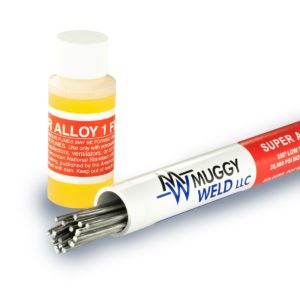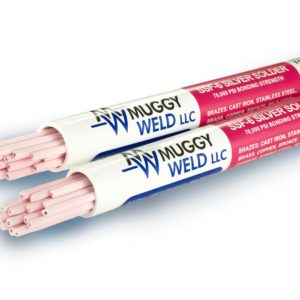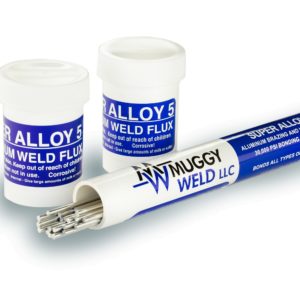Weber Carburetor Repair: A Customer’s Success Story
For vintage car enthusiasts, repairing parts like Weber carburetors can be a daunting challenge. But with the right tools and materials, what once seemed like an impossible task becomes an achievable and rewarding experience. A recent testimonial from a satisfied Muggy Weld customer demonstrates just how effective Weber carburetor repair can be using Super Alloy 1 low-temperature rod and flux.
This story features the restoration of an original Weber IDF carburetor, a classic model that has seen extensive use in iconic vehicles like Porsche, VW Beetles, VW Campervans, Fiat TwinCam, and Ford Escort RS2000 engines. These downdraft twin-bore carburetors, originally designed for racing, are now widely used in both off-road and street applications. They are also frequently used as high-quality replacements or upgrades for OEM carburetors that are prone to issues.
The Challenge of Weber Carburetor Repair
In this case, the carburetor was zinc-based, making it a perfect candidate for Super Alloy 1. This product is particularly well-suited for repairing die-cast zinc or other similar white metals, which often present unique challenges. One of the difficulties with zinc carburetors is that they can develop cracks or holes, and their soft nature can make it tricky to perform a lasting repair. With Super Alloy 1, this challenge becomes much easier to tackle.
The repair process was shared by the customer, Ernesto, who provided the following testimonial:
“My Super Alloy starter kit was delivered a few days ago. I tried it in a damaged carburetor and it worked perfectly. I’ve been able to patch a crack and a hole and tap a new thread—now it’s back to life. This product is a lifeline for the vintage auto enthusiast. Thank you for your support.”
Why Super Alloy 1 is Ideal for Weber Carburetor Repairs
Super Alloy 1 is a low-temperature soldering rod that’s specifically designed for repairing materials like zinc die-cast, pot metal, and other similar metals commonly found in carburetors. This product offers a low melting point of approximately 730°F, which is crucial when working with delicate carburetor components that can easily overheat or melt with higher-temperature tools such as oxyacetylene torches.
The repair process begins with thorough cleaning. Since zinc die-cast parts are prone to oxidation, it’s essential to remove any contaminants—such as grease, oil, or corrosion—before beginning the repair. For best results, use a wire brush or other cleaning methods to ensure the metal is clean and free of any buildup.
Step-by-Step Weber Carburetor Repair with Super Alloy 1
- Clean the Area: Start by removing all contaminants, including grease, oil, or rust, from the damaged area. This is particularly important when working with a threaded hole in the carburetor.
- Drill Out the Hole: Use a drill bit to enlarge the hole slightly, making sure to create a clean surface for the solder to adhere to.
- Preheat the Parent Metal: Using a hand-held torch, heat the zinc die-cast carburetor to around 350°F. It’s important to heat the metal evenly from multiple angles to ensure the solder bonds properly to the entire surface. If you don’t have a hand-held torch, some users have successfully preheated the part in an oven to reach the desired temperature.
- Apply Flux: Dip the Super Alloy 1 rod in its flux, then apply the flux directly to the preheated carburetor part. The flux acts as a temperature guide, and once it begins to bubble, smoke, and turn brown, it indicates the correct temperature for solder application.
- Apply the Solder: Once the flux shows signs of reaching the proper temperature, apply the Super Alloy 1 rod to the repair area. The low-temperature rod will easily melt and bond with the zinc, filling in cracks and holes to restore the part.
- Allow to Cool: After the repair is complete, allow the part to cool naturally. This will solidify the bond and ensure that the repair is strong and lasting.
A Seamless Weber Carburetor Repair
The customer in the testimonial shared how Super Alloy 1 allowed him to successfully patch a crack and hole and even tap a new thread for a more secure fit. By using this low-temperature rod and flux, he was able to restore the carburetor to working condition, saving time and money compared to sourcing a replacement part.
Super Alloy 1 is an ideal solution for Weber carburetor repairs because it not only restores the functionality of the carburetor but also ensures a smooth, clean finish. This repair method is fast, easy, and perfect for beginners, making it an accessible solution for car enthusiasts, hobbyists, and professionals alike.
The Perfect Solution for Vintage Auto Enthusiasts
Whether you are working on restoring a vintage car or need to repair a Weber carburetor on your classic motorcycle, Super Alloy 1 offers a quick, effective solution. It provides an opportunity to fix damage on carburetors that might otherwise be considered beyond repair, especially in the case of older models where replacement parts can be costly or hard to find.
By using the right materials, such as Super Alloy 1 low-temperature rod and flux, enthusiasts can breathe new life into their Weber carburetors and other similar components, keeping their engines running smoothly and efficiently.
Conclusion
For anyone facing Weber carburetor repair challenges, Super Alloy 1 offers an easy-to-use, effective solution. Whether you are patching up cracks, fixing holes, or re-tapping threads, this product can restore your carburetor’s functionality without the need for expensive replacements. Just like Ernesto, many vintage auto enthusiasts have found Super Alloy 1 to be a lifeline, and with the right tools and technique, you can achieve a flawless repair that brings your Weber carburetor back to life.
Note: Please observe all AWS Safety & Health Guidelines when using Muggy Weld products.



